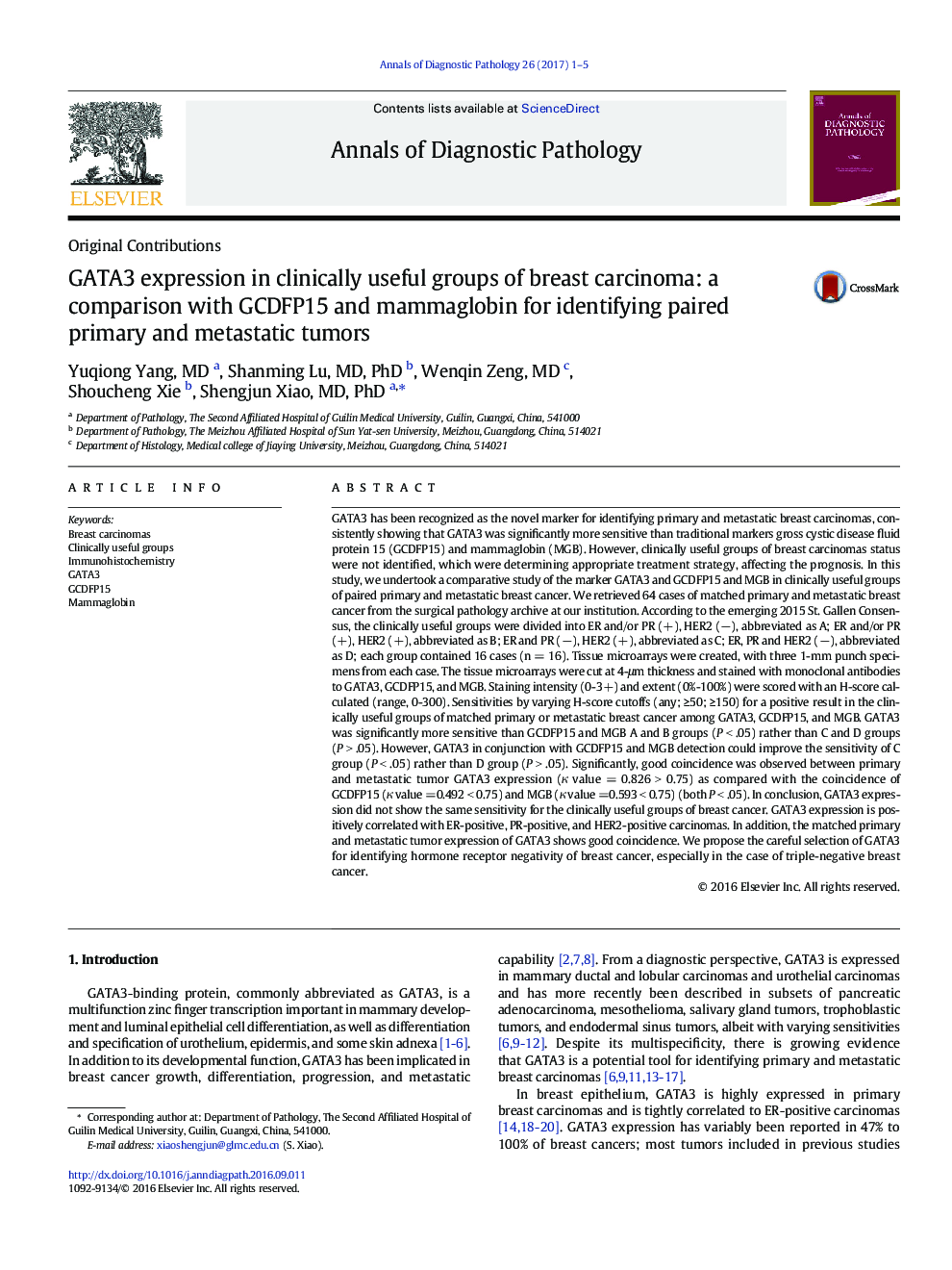| Article ID | Journal | Published Year | Pages | File Type |
|---|---|---|---|---|
| 5715874 | Annals of Diagnostic Pathology | 2017 | 5 Pages |
â¢In this article, we adopt the latest clinically useful groups of breast carcinoma to detect the sensitivity of the novel marker GATA3 compared with the traditional markers GCDFP15 and MGB.â¢We found that the GATA3 expression was not the same in the different clinically useful groups of breast carcinoma.â¢In our study, GATA3 expression was superior to GCDFP and MGB in A and B groups of breast carcinoma.â¢GATA3 expression poorly performed than GCDFP and MGB in C and D groups of breast carcinoma.â¢We propose the careful selection of GATA3 for identifying hormone receptor negativity of breast cancer, especially in the case of TNBC.
GATA3 has been recognized as the novel marker for identifying primary and metastatic breast carcinomas, consistently showing that GATA3 was significantly more sensitive than traditional markers gross cystic disease fluid protein 15 (GCDFP15) and mammaglobin (MGB). However, clinically useful groups of breast carcinomas status were not identified, which were determining appropriate treatment strategy, affecting the prognosis. In this study, we undertook a comparative study of the marker GATA3 and GCDFP15 and MGB in clinically useful groups of paired primary and metastatic breast cancer. We retrieved 64 cases of matched primary and metastatic breast cancer from the surgical pathology archive at our institution. According to the emerging 2015 St. Gallen Consensus, the clinically useful groups were divided into ER and/or PR (+), HER2 (â), abbreviated as A; ER and/or PR (+), HER2 (+), abbreviated as B; ER and PR (â), HER2 (+), abbreviated as C; ER, PR and HER2 (â), abbreviated as D; each group contained 16 cases (n = 16). Tissue microarrays were created, with three 1-mm punch specimens from each case. The tissue microarrays were cut at 4-μm thickness and stained with monoclonal antibodies to GATA3, GCDFP15, and MGB. Staining intensity (0-3+) and extent (0%-100%) were scored with an H-score calculated (range, 0-300). Sensitivities by varying H-score cutoffs (any; â¥50; â¥150) for a positive result in the clinically useful groups of matched primary or metastatic breast cancer among GATA3, GCDFP15, and MGB. GATA3 was significantly more sensitive than GCDFP15 and MGB A and B groups (P < .05) rather than C and D groups (P > .05). However, GATA3 in conjunction with GCDFP15 and MGB detection could improve the sensitivity of C group (P < .05) rather than D group (P > .05). Significantly, good coincidence was observed between primary and metastatic tumor GATA3 expression (κ value = 0.826 > 0.75) as compared with the coincidence of GCDFP15 (κ value =0.492 < 0.75) and MGB (κ value =0.593 < 0.75) (both P < .05). In conclusion, GATA3 expression did not show the same sensitivity for the clinically useful groups of breast cancer. GATA3 expression is positively correlated with ER-positive, PR-positive, and HER2-positive carcinomas. In addition, the matched primary and metastatic tumor expression of GATA3 shows good coincidence. We propose the careful selection of GATA3 for identifying hormone receptor negativity of breast cancer, especially in the case of triple-negative breast cancer.
